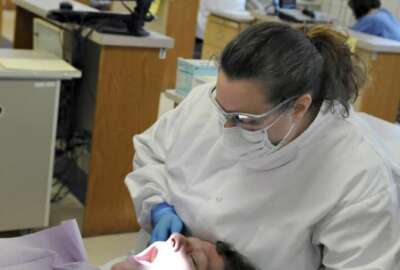
At DoT, policy drones on
FAA has moved painstakingly on drones. The Trump administration wants to speed things up.
Seeing the White House press release on making American aviation great again, I thought, “Gosh, maybe they’re making airlines add back four inches of legroom and adding peanuts.”
But no, it’s all about drones and how to integrate them into the U.S. airspace.
The Trump administration wants to accelerate the development for drone rules. Corporations and individuals have a huge interest in this. Companies like Amazon want to deliver stuff by drone. Industrial companies want to examine infrastructure and survey resources by drone. Farmers want to use drones for crop dusting. Municipalities want to hunt for zoning violations. Hobbyists want to spy on their neighbors and take dramatically enhanced selfies.
Drone capability has become astonishing. In Shenandoah National Park a couple of weeks ago, a guy backed his Harley into a parking space right next to my Honda. On the rear rack he’d strapped a black, hard-plastic case the size of a toaster oven. He explained, “That’s my drone box.”
In it lay a drone fitted to fly just above and behind him as he rode. The drone follows the location of the smart phone in his pocket. I thought, man, where have I been? I’m still thinking of sticking a GoPro on top of my helmet.
Many technological hurdles exist for the safe operation of drones in the vicinity of peopled aircraft. Sometimes drones crash into buildings. Or they drop out of the air onto people. Once in a while drones themselves become victims of birds of prey.
Drones carry privacy risks. In some instances people have shot them down, thinking they’re hovering overhead for spying purposes.
And, like regular airplanes, drones vary widely in capability and sophistication. They don’t sell General Atomics’s Predator C Avenger at 7-11. One trouble with drones is that any fool can buy and launch one, with potentially catastrophic results.
The administration’s proposal is short on specifics, although it does emphasize low-altitude operations. It also mentions communications with state, local and tribal government. Does that mean they’ll participate in eventual standards setting and rulemaking? Or just that they’ll be kept informed of federal activity?
Regardless, it’s clear the Trump administration wants to speed things up. The Department of Transportation’s (DoT) online announcement also mentioned accelerating “the approval of operations that currently require special authorizations.”
Drone policy isn’t new. The Federal Aviation Administration has been at this job for several years, and it’s been moving, let’s say, painstakingly. DoT’s stated goal, though, is fiendishly complex: Its drone vision “entails UAS operating harmoniously, side-by-side with manned aircraft, occupying the same airspace and using many of the same air traffic management systems and procedures.”
That’s so the last thing a four pound drone’s camera records is not the fan on a Triple 7’s left engine.
The continued integration of drones into the national airspace will require a national framework, I think. Shouldn’t the same rules for proximity to LAX apply to proximity to JFK? Variations in the rules ought to run according to situation, not jurisdiction.
R.I.P. Jim Obendorfer
I note with sadness the passing of James Obendofer, a long time IBMer and participant in the federal IT community.
Over 46 years in the business, Obendorfer worked on just about every kind of project you can think of. Jim retired from IBM in 1991 after 30 years and became a consultant. He was a regular at the conferences, having served on the boards or chaired committees of AFCEA, the Information Technology Association of America and Industry Advisory Council.
A West Point engineering graduate, Obendorfer spent five years on active Army duty, including a stint at running NATO Cryptographic Communications.
Plus, he was a genuinely nice guy.
Copyright © 2025 Federal News Network. All rights reserved. This website is not intended for users located within the European Economic Area.
Tom Temin is host of the Federal Drive and has been providing insight on federal technology and management issues for more than 30 years.
Follow @tteminWFED






